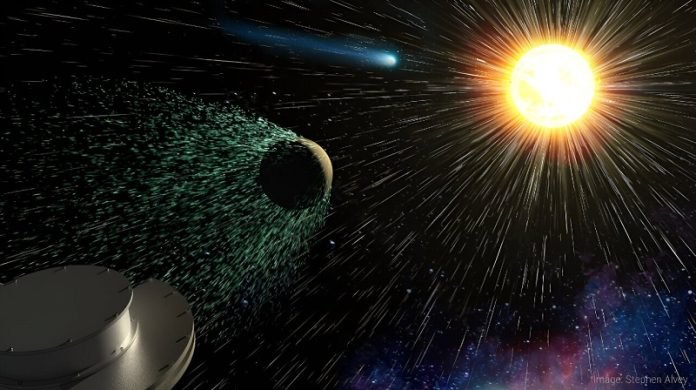
Imagine you’ve found a magical tool that whispers to you the stories of distant suns, planets, and cosmic winds!
A tool that shares secrets about the mysterious and twinkling objects we see up in the night sky, tells us where they came from, how they glitter and shine, and how they might dance in the future.
This isn’t a plot of a science-fiction tale, but a real-world marvel named SPICES, designed by brilliant scientists to explore the spectacular unknowns of our solar system.
The Solar Wind Pickup Ion Composition Energy Spectrometer, or simply SPICES, is much like our fantastical tool, helping scientists unravel the enchanting mysteries hidden in the vastness of space.
It’s like a cosmic detective, snooping around to find out where the electrically charged gas, called plasma, in our solar system came from, how it gets its energy, and how it could affect our beautiful blue planet and daring astronauts exploring the cosmos.
The universe, in its majestic expanse, is mainly composed of hydrogen, but it also contains heavier elements vital for life and the formation of planets and other celestial wonders.
These heavier elements, known as “heavy ions” when they bear an electrical charge, are pivotal in unlocking the secrets of various universal phenomena and helping us understand the magnificent tales of our solar system.
Now, let’s talk about the sun, our spectacular beacon of life.
The sun doesn’t just give us light and warmth; it also produces solar winds, which are streams of charged particles that travel through space, touching planets and other celestial bodies along their way.
Some of these particles are heavy ions, which not only shape life but also weave into the dramatic events of the sun, like solar flares and storms that might affect our astronauts and technology in space.
Understanding these heavy ions and their journeys through the solar system helps scientists predict and safeguard against solar storms, ensuring safe voyages for our space explorers.
SPICES, our celestial investigator, is meticulously designed to study these particle streams, especially the heavy ions, with utmost precision.
It scans and analyzes the solar wind, which is the gust of particles blowing away from the sun, and includes those from intense solar storms. SPICES also scrutinizes the wind from the infinite interstellar space that drifts into our solar system, becoming charged as it mingles with the sun, and the wind that is exhaled from planets and their atmospheres.
By examining the intricate details of these particle winds, SPICES aims to weave together the cosmic tapestry, narrating how our solar system was born, its present demeanor, and its future ballet in the cosmos.
However, studying these subtle, yet vital, heavy ions is no easy task! SPICES amplifies the energy of incoming ions safely and innovatively, enabling their characteristics to be distinctly identified and studied.
And it does so while shielding its electronic components and neighboring instruments from any potential high-energy mischief, ensuring the longevity and safety of the device amid the cosmic seas.
The fascinating stories and secrets that SPICES will unravel will not only enhance our understanding of the solar system and its majestic phenomena but also safeguard our technological advancements and future space endeavors.
As SPICES gets ready to embark on upcoming missions, it promises to shed light on the sun’s global behavior, the moods of planetary atmospheres, and the enchanting mysteries of space weather and interstellar space, enriching our cosmic knowledge and satiating our curiosity about the vibrant universe that surrounds us.
Follow us on Twitter for more articles about this topic.
Source: NASA.



